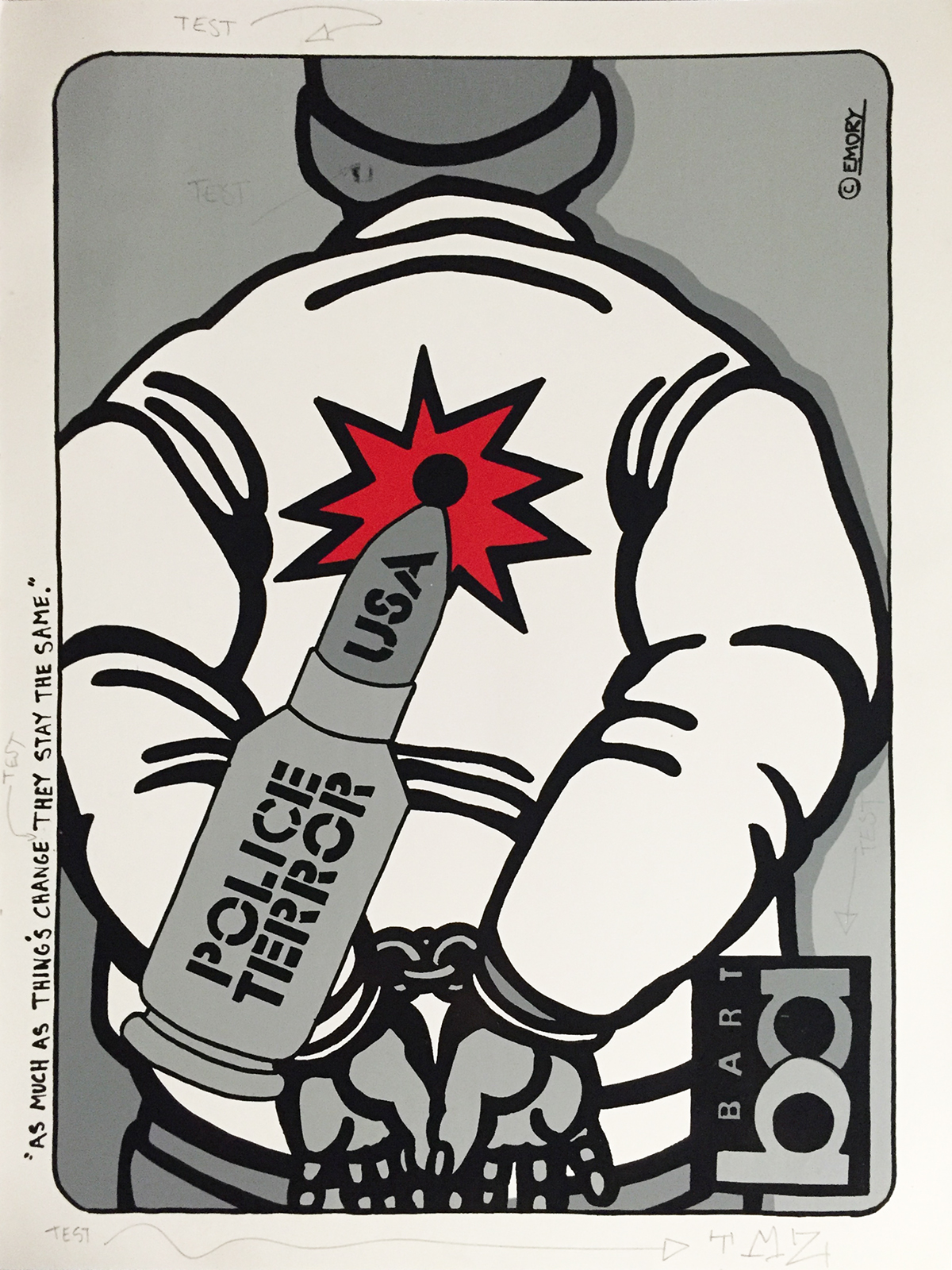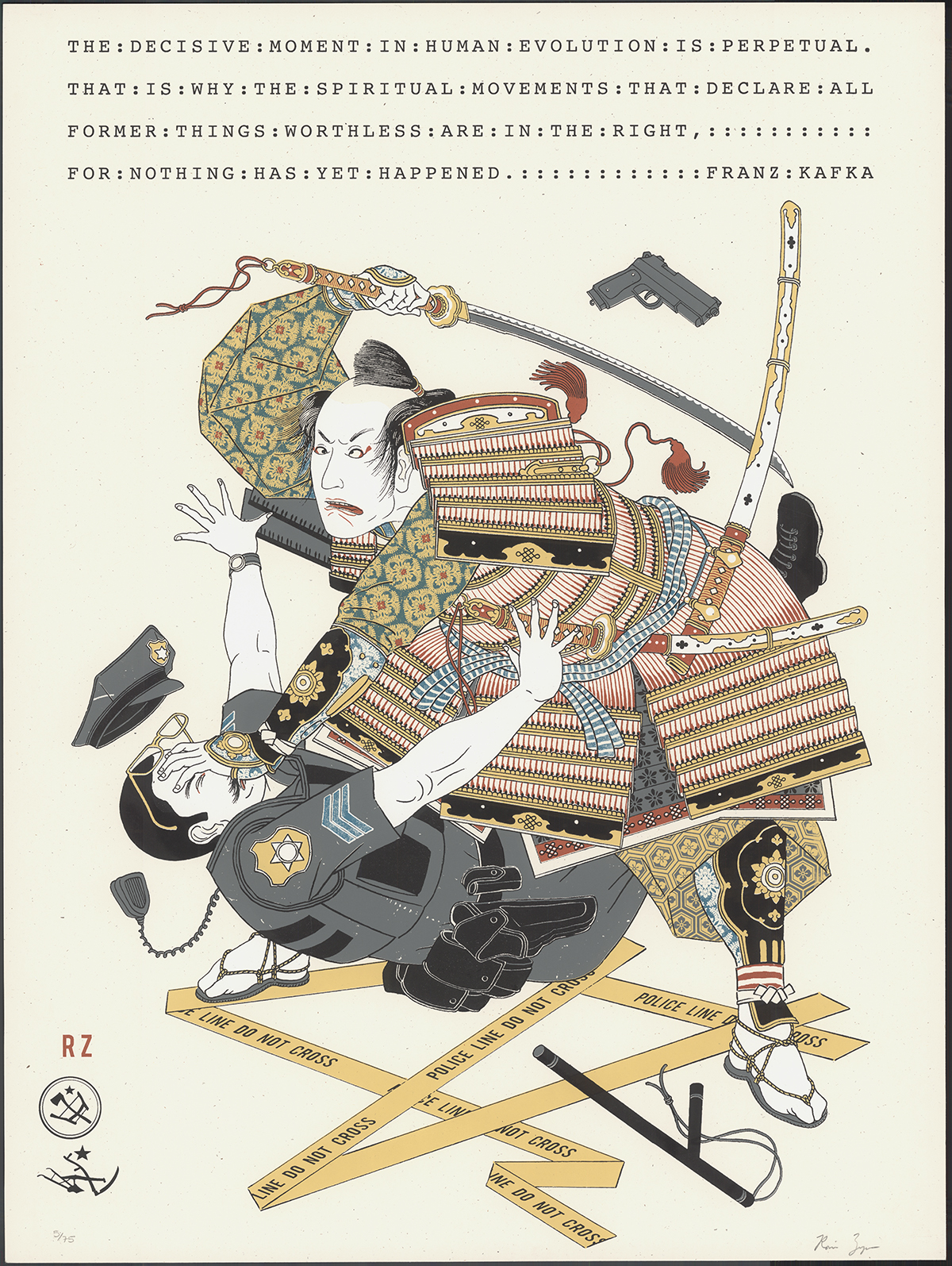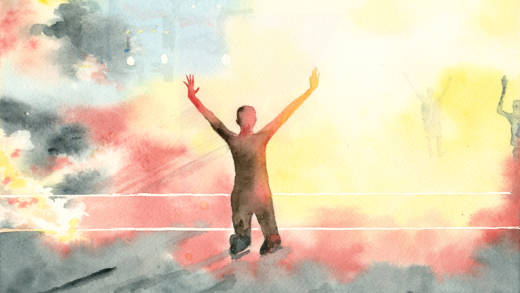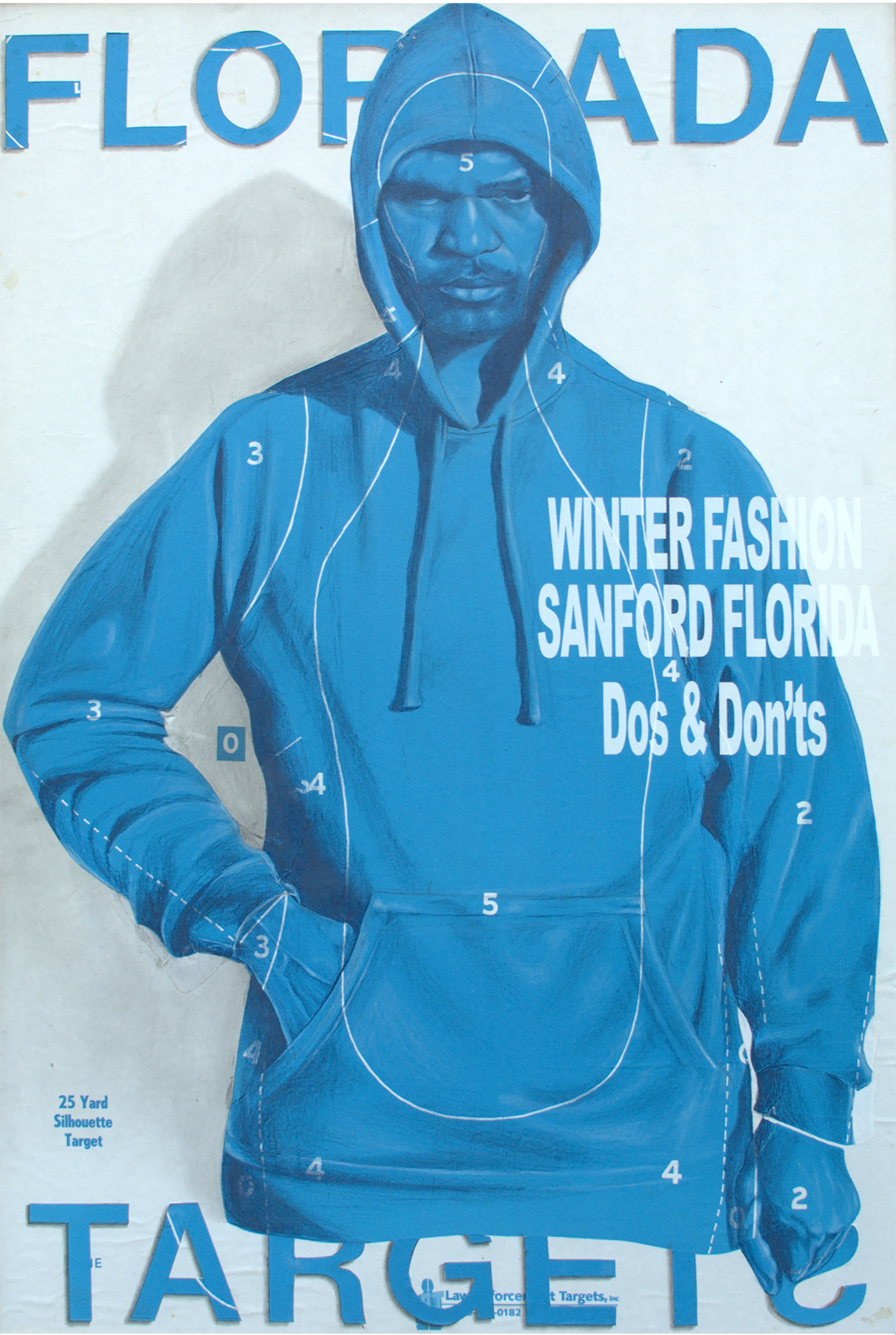In the early hours of March 3, 1991, Rodney King was severely beaten by Los Angeles police officers after a high speed chase through a maze of residential neighborhoods and freeways. A video of the incident was filmed from a bystander’s balcony, making it perhaps the first viral piece of documentation of police brutality in America.
The clip of the four officers aggressively swinging batons and feet at King — while at least four officers stood by and watched — spread quickly from one news network to the next, igniting outrage that would erupt into a week-long riot the following year, when the officers were acquitted of using excessive force against King. The rioting fanned out across Los Angeles in a wild and dangerous wave, causing 56 deaths, over 2,300 injuries, nearly 7,000 fires and, some argue, a further racial divide across the nation.

Peering back over the last two and a half decades, VIRAL: 25 Years From Rodney King, a multi-media art exhibit at Betti Ono Gallery in Oakland, asks the question everyone wants an answer to: So, America, how have we changed?
Curator Daryl Elaine Stenvoll-Wells, founder of Art Responders (a social media community that allows artists to share creative responses to police brutality, born at the rise of the Black Lives Matter movement), helps guide the conversation. The traveling show first debuted in Los Angeles last fall. The current exhibition closes, appropriately, on Oct. 22, the National Day of Protest Against Police Brutality.
At Betti Ono, a timeline of incidents stretches along the gallery walls, highlighting significant laws and socio-technical developments related to police violence against people of color. VIRAL’s timeline points to major turning points within the criminal justice system and corresponding rises in violent incidents by police. Among these are the 1994 Criminal Justice Act, which called for tougher punishment of crimes and increased numbers of law enforcement (in lieu of education and other crime preventing measures).

Commentary and fact sheets through the gallery discuss topics such as racial disparities in non-violent crimes, settlement amounts in wrongful death suits, and the inherent flaws in stop and search laws. Notes on violence against people with physical and mental disabilities are also included among the exhibition’s visual art.



